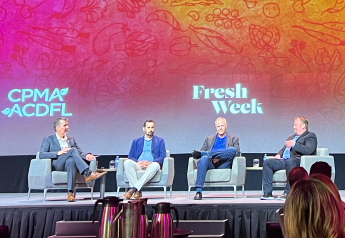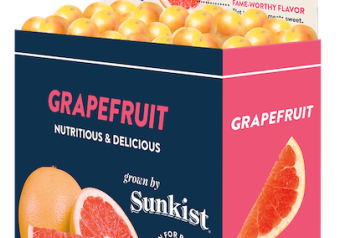Consumer retail habits, reshaped by pandemic, aren’t changing soon

The consumer’s wild ride through the COVID-19 pandemic isn’t over yet, according to Steve Lutz, senior vice president of insights and innovations for Category Partners.
Lutz spoke Nov. 11 at The Packer’s virtual West Coast Produce Expo about consumer shopping behaviors since the start of the global pandemic and what might be expected from shoppers in the future.
With reports around the country of new or rekindled hotspots for COVID-19 cases, Lutz said that the U.S. may see a bit of a return to the pantry-stocking behavior seen in March and the early weeks of the crisis.
“I think we’ve got a wild ride for the foreseeable future here,” he said.
Consumers will continue to order groceries online, he said, and the “click and collect” model may have staying power through the crisis and beyond.
“I think we are not only going to see that continue to grow the farther we get into this pandemic, but I think we also can anticipate that when (we) get control of (the virus) and it ends, I think many of those behaviors are going to stick,” Lutz said. “We’ll see a permanent shift in a segment of consumers that really liked that option, and it becomes a real time-saver for them.”
Shoppers 45 years and younger, typically with families, are big users of the click and collect model, he said.
More shoppers are making online purchases a regular part of their grocery “spend,” along with reduced numbers of trips to stores, Lutz said.
“Those impulse trips (to the supermarket) don’t carry quite the same weight with the click-and-collect shopper,” he said.
While staple items like bananas, apples and potatoes may find consistent online demand, Lutz said impulse produce items will suffer.
“Once you move beyond the basic (produce items), it becomes harder and harder to shop by click and collect,” he said.
For example, while consumers tend to trust that retailers will pick quality produce for their online orders, the bigger issue is that many items are out of sight and out of mind.
“Impulse items tend to be those items that may not have high-end awareness around, and you don’t necessarily have (the item) as a shopping list item,” he said.
In contrast, a visit to the store allows consumers to see an attractive display of black grapes, for example, and pick them up.
“Consumers aren’t going to go into an online shopping environment and start drilling down, looking for options in the same way they do when they’re just moving through the store, so that piece we’re still trying to figure out,” he said. “How do you move consumers beyond staples?”
Delivery of groceries to homes is more expensive, Lutz said, but some consumers may be willing to pay the price for the time saved and to avoid the perceived risk of going to the store.
High unemployment and disruption in the job market will cause some consumers to cut back.
“As we round into 2021, we know that there’s a segment of consumer households that are absolutely going to be impacted by this, they have been impacted by (the economic downturn), and they are changing their behavior,” Lutz said.
Part of that impulse to cut back has been offset by less spending on restaurant food, Lutz said.
Consumers will also react by cutting down on the number of trips to stores and the number of stores they shop at, and by buying less expensive food.
With restaurants likely struggling into 2021, Lutz believes the supermarket, with in-store and online channels, will continue to be the go-to place for consumers to find their food through much of 2021.
“We’re going to be in this absolutely at least through quarter-one and probably into quarter-two, with similar patterns of consumers being pushed or forced to buy from supermarkets for the majority of their meals,” he said.







